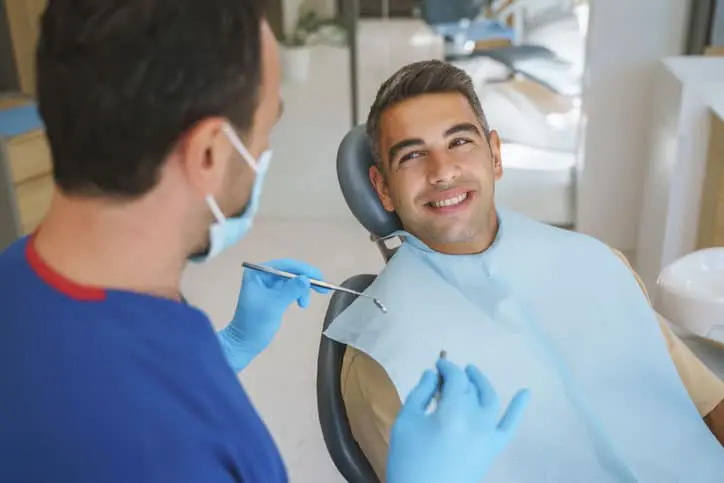According to the American College of Prosthodontists, dental crowns are the “most common restorative procedure” for significant tooth loss. Many types of oral crowns are available, ranging in material and attachment style. All dental crowns require the same basic care techniques, and the good news is that it isn’t much different than your current hygiene habits. Read on to learn how to care for oral crowns.
Care Tips for the Day You Get Your Crown Installed
You’ll need to be extra cautious on the day you get your crown installed. It takes some time for the bonding agent to cure completely. That curing process is what ensures the longevity of your oral crown.
Do not eat or drink anything for the first hour after installation. Eat soft foods for the remainder of the day, such as mashed potatoes, ground beef, or soup. Chew on the side of your mouth opposite to the crown. You can eat and drink like normal the following day.
Your dentist may recommend a slightly different version of these care instructions. Follow their advice! This is a general guide. Your dentist will provide specific tips based on your oral health needs.
How to Brush and Floss around Dental Crowns
Brush lightly around the crown for the first 24 hours. Floss delicately, and be careful not to pull on the crown. Wriggle the floss in between the teeth and gently pull the floss through at the gum line.
You can resume normal brushing and flossing the day after your crown installation. Check out our tutorial on How to Brush and Floss Like a Pro.
Foods and Drinks to Avoid
Your crown can withstand a decent amount of pressure, but every pull weakens the bond between the crown and the abutment/tooth. Thus, avoid sticky foods like caramel, taffy, and gum. Those foods yank on your crown and create unnecessary pressure.
Other foods to avoid include hard candies, whole apples, hard nuts, and anything difficult to chew. There are ways around these issues. Instead of biting into an apple, you can slice it up. Instead of eating whole almonds, you could eat softer nuts or choose chopped almonds.
Some oral crown wearers report sensitivity to hot and cold foods. You may need to adjust your eating habits if you experience these symptoms.
Can I Get My Teeth Whitened with an Oral Crown?
When you get fitted for an oral crown, you will select a color that closely matches your natural teeth. This helps your crown look as natural as possible.
Crowns will not change color if you get your teeth whitened. You may see a variation in your natural teeth and crown after whitening because the crown looks like the original shade. The color discrepancy may or may not be noticeable, depending on where the crown is.
Talk to your dentist about your future smile plans. If you routinely whiten your teeth, you may opt for a crown that better aligns with the whitened shade. Your dentist may recommend whitening before you get your crown so you can choose the right color for your replacement tooth.
What to Do If Your Dental Crown Comes out
If your dental crown comes out, put it in a container and contact your dentist. Schedule the earliest available appointment to reinstall the crown. If you swallow the crown, talk to your dentist about replacement options. Many manufacturers will warrant the crown for the first year.
You may need a new crown if your current crown is several years old. It depends on how well the crown fits and its condition.
Clinton Dental Center offers oral crowns and emergency dentistry services. Whether you need a tooth extraction, restorative dentistry, or routine oral care, our knowledgeable staff is here to assist you. Please call (586) 949-5363 to schedule an appointment at our Chesterfield MI dentist office.











